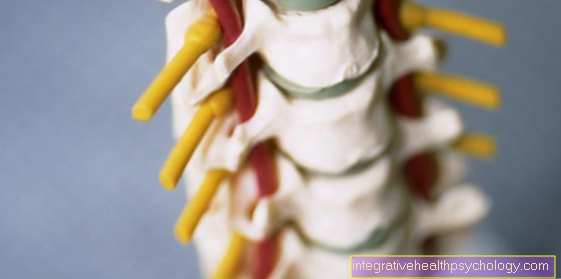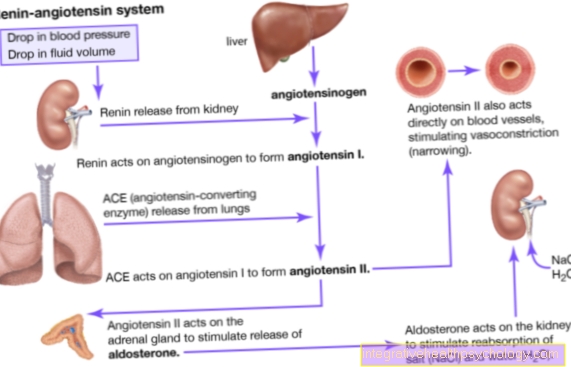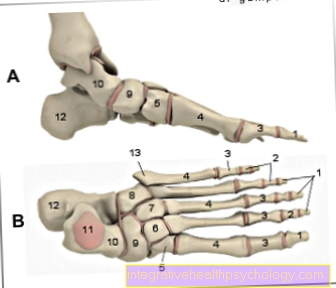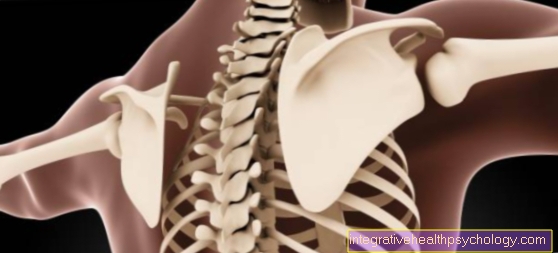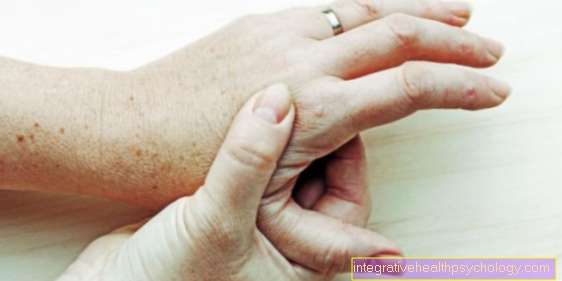Acute lymphocytic leukemia (ALL)
Synonyms in a broader sense
Leukemia, white blood cancer, viruses HTLV I and HTLV II, human t-cell leukemia virus I and II, German: Humanes T cell leukemia virus I and II, Philadelphia chromosome
definition
The degenerate cells of this type belong to the preliminary stages of the lymph cells (lymphocytes). In this type of leukemia, too, an acute, i.e. rapid course of the disease can be expected. It mainly affects the early stages of cell development.
.jpg)
frequency
It is the most common white blood cancer in children. It is only the fifth most common leukemia in adults. However, from the age of 80, new cases similar to those in childhood are recorded.
You can find more information on this topic here: Leukemia in children
causes
Most of the causes can be found in the general leukemia chapter. In ALL (acute lymphoblastic leukemia) also play Viruses an important role in the creation. The viruses HTLV I and HTLV II (Human t-cell leukemia virus I and II, German: Human T cell leukemia virus I and II) are held responsible for the development of this type of leukemia in Japan and the Caribbean. Other causes are again irregularities (aberrations) in the gene carriers (chromosomes). An atypical connection (translocation) between chromosomes 9 and 22, which leads to the so-called Philadelphia chromosome leads to unrestrained growth of the affected cells. This formation of the Philadelphia chromosome described above is responsible for 1/5 of ALL (acute lymphoblastic leukemia) in adults and about 5% of all childhood ALL (acute lymphoblastic leukemia).
Symptoms
The symptoms of ALL are very different and are difficult to narrow down precisely. In principle, the symptoms (anemia, susceptibility to infection, paleness, etc.) are the same as those of the AML (Acute myeloid leukemia) occur. However, symptoms such as a headache or paralysis because this type of leukemia is often the Meninges (Meninges) affected. The Lymph nodes are also palpable more often than with AML (acute myeloid leukemia). There are then in certain regions, e.g. palpation of round oval lymph nodes in the neck, armpit or groin.
Without a blood test, the disease cannot be reliably diagnosed. Changes in all three blood cell rows can be detected in the blood:
1. Decrease in red blood cells (anemia)
2. low blood platelets (thrombocytopenia)
3. Increase (leukocytosis) and decrease (leukocytopenia) in white blood cells
As you can see, at leukemia many unspecific symptoms occur that can arouse suspicion of the disease.
diagnosis
The procedures are the same as those described for AML (acute myeloid leukemia). So it should be after a blood draw Differential blood count from which you can read the exact number of platelets and red and white blood cells.
What should be emphasized here is the enormous importance of genetic analyzes in order to detect the irregularities in the gene carriers (Chromosome aberrations), as these are very important for the prognosis. One difference to AML (acute myeloid leukemia) in diagnostics is that with ALL (acute lymphoblastic leukemia), the infestation of the central nervous system should pay attention. So there should be punctures of the nerve water (CSF punctures) or Computed tomography recordings of the head (so-called CCT) in order to detect an infestation of the meninges or the nerve water. To get lymph node enlargements for that eye To detect invisible areas, computed tomography images of the abdomen should be made, including any enlargements of the spleen (Splenomegaie) or the liver (Hepatomegaly).
course
_2.jpg)
In contrast to chronic leukemias, the symptoms of acute leukemias develop within short time. Symptoms often progress rapidly within a few days.
At the beginning there are mainly symptoms due to the increasing restriction of normal blood formation. Those affected then suffer from Anemia with striking Skin pallor and decreased performance. About a third of patients suffer from under diagnosis at the time of diagnosis Bleeding (e.g. gum and nosebleeds) and recurring, severe ones Infections. Almost 60% are painless at the onset of the disease Lymph node swelling or find an enlarged spleen.
Read more on the subject at: Anemia
In the course of the process, the leukemia cells "migrate" to various organs and thus spread throughout the body. Possible symptoms can include Bone pain (in case of bone involvement) and a headache (if the nervous system is affected). As a rule, however, the infiltration into organs only takes place at an advanced stage. Only about 9% of those affected suffer from leukemia of the organs at the beginning of ALL.
In the course of time it continues to occur frequently Weight loss and loss of appetite.
Since the untreated acute lymphoblastic leukemia is always fatal quick start of therapy indispensable. Because it is a very aggressive disease, the treatment must be correspondingly intensive. For this purpose, various chemotherapeutic agents are used to form a so-called "Polychemotherapy“Combined.
Read more on the subject at: chemotherapy
Various side effects can be observed in the course of therapy. Often at the beginning Nausea and vomiting in the foreground. Often there is an inflammation of the oral mucosa (mucositis).
Later, patients often suffer from severe, sometimes life threatening infections. Later, e.g.there are also temporary nerve or kidney damage.
Usually the duration of treatment is around one and a half to two years.
ALL in children
About 80% of childhood leukemias belong to the group of acute lymphatic leukemias. Thus the disease is the most common blood cancer in children. Overall, it even accounts for around a third of all childhood cancers! With around 500-600 new cases per year, it is still one of the rare diseases.
Those affected develop the first symptoms within a few weeks. Many children tend to fail at first unspecific complaints on. These include increased Tiredness, fever or noticeably pale skin. Small children in particular often lose interest in playing and appear “dull”.
It is not uncommon for them to be small, punctiform Skin bleeding discover. The doctor then speaks of "Petechiae“.
Since the leukemia cells also impair the immune system, many of the young patients suffer from recurring, sometimes severe Infections.
In principle, the ALL, especially with small children, is a real “chameleon” with many different symptoms. These include e.g. Bone pain or upper abdominal discomfort.
Are there e.g. if blood tests indicate evidence of ALL, the diagnosis is confirmed by Bone marrow puncture.
At this point at the latest, affected children will be transferred to a specialized children's clinic (Pediatric Oncology / Hematology) referred.
Subsequent examinations, such as Ultrasound or MRI, are essential for the upcoming treatment planning and can rule out the infestation of other organs.
One is essential start therapy as soon as possible, as ALL progresses rapidly and, if left untreated, leads to death within a short time. The focus of the treatment is the chemotherapy. The leukemia cells can very often be suppressed by combining different substances. In addition, radiation, antibodies or bone marrow transplants can be used.
Fortunately, the prognosis for acute lymphoblastic leukemia in children has improved significantly over the past few decades. So are five years after the diagnosis, for example 90% disease free!
therapy
They are also the same schemes as for the AML (A.kute myeloic L.eukemia), i.e. chemotherapy, foreign or self-stem cell donation (still experimental).
A difference to the AML (akute myeloic L.eukemia) consists in the fact that the ALLES (A.kute lymphatic L.eukemia), the meninges must also be considered. So you should also administer drugs that are administered directly on site and work on site, such as that Methotrexate, or consider irradiating the affected area. Again, the drug plays a role Imatinib plays an important role if the Philadelphia chromosome described above is responsible for the tumor. In recent years the chemotherapy excellent results in the treatment of ALLES (A.kute lymphatic L.eukemia).
More about this topic can be found: Chemotherapy side effects
Chances of recovery
Since acute lymphoblastic leukemia (ALL) is a very mixed clinical picture, it can be no generally valid statements on the prognosis or decrease life expectancy.
In the course of time, however, some so-called "Risk Factors" to be established. Put simply, these factors allow an approximate assessment of how well the disease responds to therapy and how high the risk of the disease relapse (relapse) is.
Because basically: the better it is Therapy response, the better the chances of recovery. Therefore, before starting therapy, possible risk factors are carefully identified and the treatment is adjusted accordingly.
The following risk factors play a role in acute lymphoblastic leukemia:
1. Age
children between the ages of 2 and 10 years of age have best forecast. In addition, acute lymphoblastic leukemia is the most common form of leukemia in this age group!
A disease is to be assessed rather unfavorably before the 1st year of life and after the 50th year of life. In addition, with age, the number of others Pre-existing illness, such as. High blood pressure, or diabetes, increases. Any previous illnesses of this kind can reduce the tolerability of aggressive leukemia therapy.
2. subtype
There are numerous subgroups within the clinical picture of acute lymphoblastic leukemia. In order to make this precise classification, a Immunotyping. In this complex process, the leukemia cells are assigned to a precise level in the blood cell series. There are e.g. Leukemias originating in the B lymphocytes, the so-called "B-cell leukemia". On the other hand, the malignant cancer cells can also be derived from the T lymphocytes. Then one speaks of a "T cell leukemia'.
The further classifications of acute lymphoblastic leukemia are complex and multi-layered and even make some medical professionals sweat. In principle, however, the following subtypes are considered less good:
- pro-B-ALL
- early T-ALL
- mature T-ALL
3. Pattern of infestation
In the course of the disease, leukemia cells can in principle all organs and regions of the body infested. The less the disease is spread in the body when it is first diagnosed, the better the chances of recovery. Has the leukemia e.g. If parts of the nervous system, such as the meninges, are already affected (meningiosis leucaemica), the prognosis is rather unfavorable.
4. White blood cell count
Leukocytes, better known as "White blood cells“Play an important role in the course of acute lymphoblastic leukemia. If they are massively increased at the beginning, this indicates an aggressive form of the disease and, in the long term, a poorer prognosis.
In summary, however, it must be stated that the prognosis of the ALL im Individual case must be determined. General statements about life expectancy are hardly possible with such a complex disease and can only be considered with individual consideration of numerous aspects.









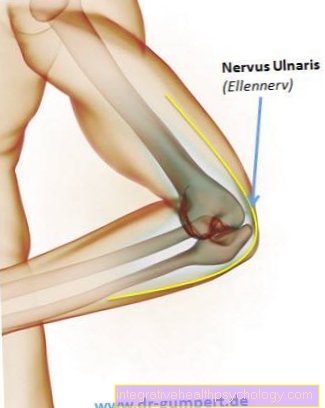
.jpg)
